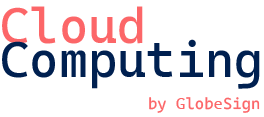Table of Contents
Understanding Cloud Cost Optimization
Cloud cost optimization is the process of managing and reducing your cloud spending while maximizing the value of your investments. Think of it as tuning a finely engineered machine; every component must work efficiently to avoid wastage.
With numerous services and pricing models available, navigating cloud costs can be challenging. A basic understanding of cloud billing is essential. Here are a few things to consider:
- Resource Types: Different types of resources (e.g., compute instances, storage) have distinct pricing models.
- On-Demand vs. Reserved Instances: Opting for reserved instances can save money in the long run for predictable workloads.
- Usage Patterns: Understanding how your teams use cloud resources can help identify waste.
The Importance of Monitoring
Without proper monitoring, it is easy to fall victim to cost overruns. Consider the analogy of a personal budget: without tracking your spending, you might be shocked at the end of the month when the bills come due. Similarly, businesses can easily exceed their cloud budgets without real-time visibility into usage.
Benefits of Automated Monitoring Tools:
- Real-time Insights: Get instant visibility on spending trends.
- Alerts for Anomalies: Automated notifications can alert you to unusual spending patterns, helping you mitigate costs promptly.
- Historical Data Analysis: Track changes in usage over time to inform future budgeting and capacity planning.
Popular Cloud Cost Optimization Tools
Several automated monitoring tools can help organizations keep their cloud spending in check. Here’s a list of some of the most effective ones:
- AWS Cost Explorer: This powerful tool allows users to visualize and analyze their AWS spending patterns. With customizable reports, you can track your costs daily or monthly and identify areas for potential savings.
- Azure Cost Management and Billing: For Microsoft Azure users, this tool provides in-depth analysis of usage statistics and allows budgeting and forecasting based on historical spending.
- Google Cloud Billing Reports: Google Cloud offers versatile reporting features that inform businesses about their cloud expenses, making it easier to spot opportunities for cost savings.
- CloudHealth: This comprehensive platform integrates multiple cloud providers, offering a unified view of spending across AWS, Azure, and Google Cloud, along with recommendations for optimization.
- CloudCheckr: This tool offers granular cost analysis and optimization recommendations, helping organizations manage multi-cloud environments more effectively.
Real-World Applications
Organizations of all sizes can benefit from cloud cost optimization tools. Here are a few scenarios to illustrate their impact:
- Startups: A budding SaaS company using AWS noticed its production costs were growing faster than anticipated. By implementing AWS Cost Explorer, they were able to identify underutilized EC2 instances. They downsized and achieved savings of over 30% in their monthly bill.
- Large Enterprises: A multinational corporation using Azure was struggling with inheritance and shadow costs associated with its development environments. With Azure Cost Management, they identified extraneous resources that weren’t being utilized after hours. By setting up auto-scaling rules and cost alerts, they reduced operational costs by approximately 20%.
- E-commerce Platforms: An online retailer forecasted significant traffic spikes during the holiday season. By leveraging Google Cloud Billing Reports, they were able to plan their cloud spending more effectively, establishing budget limits and ensuring they could maximize performance without overspending.
Best Practices for Cloud Cost Management
To effectively optimize cloud costs using automated tools, consider the following best practices:
- Regular Audits: Implement regular audits of your cloud resources to detect waste or unexpected charges.
- Set Budgets and Alerts: Establish a budget for each of your cloud services and configure alerts to avoid surpassing that limit.
- Choices Based on Workloads: Opt for the right instance types based on your applications. For example, use spot instances for non-critical workloads or preemptible instances when appropriate for cost savings.
- Training and Awareness: Educate your team on the importance of cost management in the cloud. The more they understand, the more effective they will be at keeping costs in check.
Conclusion
In conclusion, optimizing cloud costs is essential for businesses looking to leverage cloud computing efficiently. Automated monitoring tools provide transparency and control that can lead to significant savings. By selecting the right tools, conducting regular audits, and fostering a culture of cost awareness within your organization, you can turn cloud spending into an asset rather than a liability.
As cloud technology continues to evolve, it’s crucial to stay ahead of cost trends. Emerging tools and practices will further enhance your ability to optimize cloud spending effectively. The future of cloud cost optimization looks bright, but being proactive is key to harnessing its full potential.
FAQ
1. What are cloud cost optimization tools?
Cloud cost optimization tools are software solutions designed to help businesses manage and reduce their cloud spending while maximizing the value of their cloud resources.
2. How can automated monitoring help with cloud costs?
Automated monitoring provides real-time insights, alerts for anomalies, and historical data analysis, helping organizations keep track of spending and identify wasteful practices.
3. Why is understanding cloud billing important?
A basic understanding of cloud billing is essential to navigate different pricing models and resource types effectively, allowing businesses to make informed decisions that lead to cost savings.
4. Can cloud cost optimization tools benefit startups?
Yes, startups can greatly benefit from these tools by identifying and eliminating wasteful spending as they scale their cloud usage.
